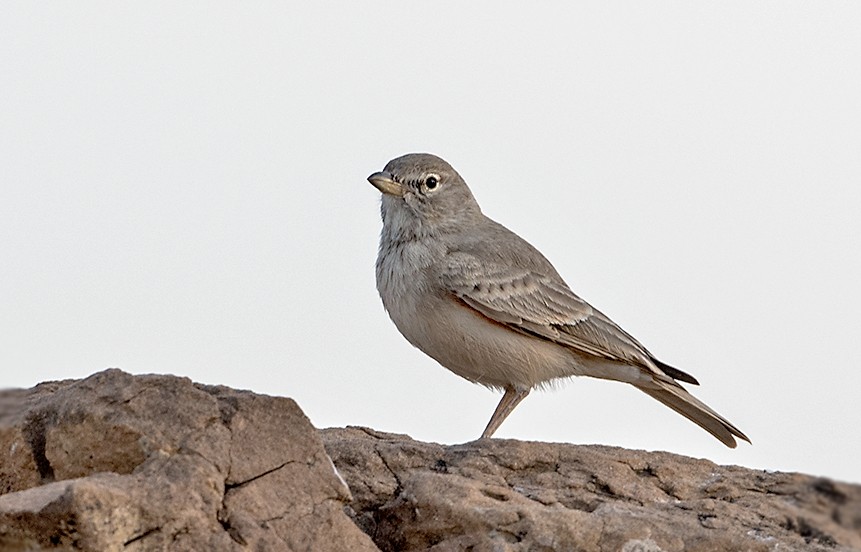Desert Lark
A species of Desert Larks Scientific name : Ammomanes deserti Genus : Desert Larks
Desert Lark, A species of Desert Larks
Botanical name: Ammomanes deserti
Genus: Desert Larks
Content
Description General Info
Description
The desert lark is a medium-sized, big-headed and long-billed lark, growing to a length of 16 to 17 cm (6.3 to 6.7 in). The sexes are alike, but there is considerable geographical variation. It has a rather dull plumage which can vary from quite pale to rather dark. Plumage may vary between subspecies but individuals within populations can be variable too. It is similar in appearance to the bar-tailed lark but is slightly larger, has a less-domed head, a larger broader beak, stouter legs and a longer tail. The upper parts of the many subspecies vary in colour; most are pale greyish brown, but some races are very washed out and others are quite a deep colour. Some have some rufous colour on wings and tail, similar to the bar-tailed lark, but the underparts are a pale pinkish grey and have much more streaking than that species, and the desert lark lacks the clearly defined terminal black band on the tail of that species, although it may have a rather diffuse dark patch. The colour variation seems to mainly match the habitat, so sandy-coloured birds are commoner in sandy areas, greyer birds in rocky areas and the darkest birds in desert dominated by basalt. The song is a mournful choo-wee-chacha wooee, uttered from the ground or a boulder, or during undulating flight. It is more mellow and less squeaky than that of the bar-tailed lark. When flushed it utters a short churree or chee-lu. 
Size
17 cm
Nest Placement
Ground
Feeding Habits
Desert Lark consume a mixed diet, varying seasonally and by region, including seeds, locusts, and beetles. Forages on the ground or in shrubs, occasionally catching airborne insects. Chicks are primarily insect-fed. Unique behaviors include breaking hard food on rocks and gathering at water sources, though desert Lark can also survive without water.
Habitat
Desert Lark favors arid, stony habitats within deserts or semi-deserts, typically seeking broken terrain with a vertical aspect, such as rocky slopes and escarpments. Preferring lowland areas but also occupying heights up to 2000 meters, its distribution spans the lowland deserts of northern Africa and southwest Asia.
Dite type
Granivorous
General Info
Feeding Habits
Bird food type
Behavior
The desert lark is not very sociable and does not form large flocks, being mainly encountered in small groups or as single birds. They are territorial when breeding, nesting on the ground under the shelter of a tussock or stone in a shallow scrape lined with plant material and having a rim of pebbles, which may surround the nest or be on the more exposed side of the nest. The clutch is 1-5 eggs and these are laid at different times in various parts of its range, e.g. January–February in the south and March–April in the north. The desert lark eats seeds and insects, the latter especially in the breeding season. 
Distribution Area
The desert lark is found from Mauritania, Western Sahara and southern Morocco in the west east through northern Africa south to Chad and Somalia through south west Asia to western India. It is resident (non-migratory) apart from local movements in arid stony areas, and avoids flat sand and will always be found in broken terrain with a vertical element to it 
Species Status
Not globally threatened.
Scientific Classification
Phylum
Chordates Class
Birds Order
Perching birds Family
Larks Genus
Desert Larks Species
Desert Lark 